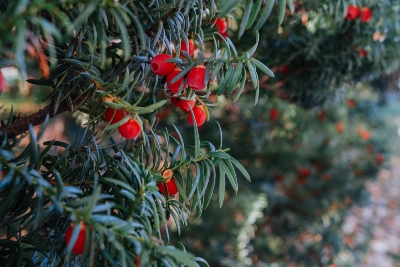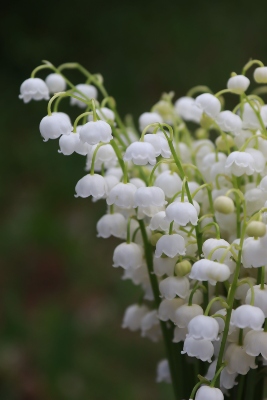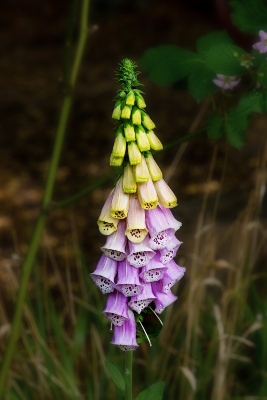While enjoying a leisurely walk with dogs in the beautiful British countryside, it’s important to be aware of the potential dangers posed by poisonous plants lurking along the paths.
Potential Risks
This article highlights some of our common toxic plants and the potential risks for our beloved canine companions.
Yew (Taxus Baccata) – The Silent Threat:
The yew tree, with its dark green foliage and red berries, poses a significant danger to dogs. All parts of the yew contain toxic compounds called taxines. Ingesting even a small amount can lead to severe poisoning, affecting the central nervous system and causing vomiting, tremors, difficulty breathing and, in extreme cases, cardiac arrest.

Rhododendron (Rhododendron Ponticum) – Beauty with a Hidden Danger:
The vibrant blooms of rhododendron may add a splash of colour to the landscape, but these popular ornamental shrubs contain grayanotoxins. Ingesting any part of the plant, especially the flowers and leaves, can lead to adverse effects in dogs. Symptoms include vomiting, diarrhoea, abdominal pain, and even heart irregularities.

Lily of the Valley (Convallaria Majalis) – Delicate Yet Dangerous:
Lily of the Valley is an iconic woodland plant with its fragrant bell-shaped flowers. But, beware, these charming blooms harbour potent cardiac glycosides! Ingesting particularly the berries, leaves, or flowers, can cause digestive upset, irregular heart rhythms, seizures and heart failure in dogs.

Foxglove (Digitalis purpurea) – A Flower of Caution:
Foxgloves, with their tall spikes of tubular flowers, may be captivating, but they contain cardiac glycosides that are highly toxic to dogs. Ingestion of any part of the plant can lead to heart arrhythmia, vomiting, diarrhoea, drooling, confusion and tremors.

Veterinary Assistance
If you suspect your dog has consumed any of the above plants, seek immediate veterinary assistance. Although this article has highlighted some common poisonous plants, ensure you become familiar with the other dangerous vegetation that can be found on walks. Always read up or ask locally when holidaying in unfamiliar areas.
A “special mention” for the blue-green algae, also known as cyanobacteria, which can pose a significant threat to the health and well-being of dogs. These microscopic organisms are found in lakes, ponds, and rivers, especially during warm weather.
While not all blue-green algae are toxic, certain species produce cyanotoxins, which have severe, even deadly, effects on dogs. Remember to keep a watchful eye and consult a veterinarian if your dog exhibits any concerning symptoms.
For more pet articles, click here.


